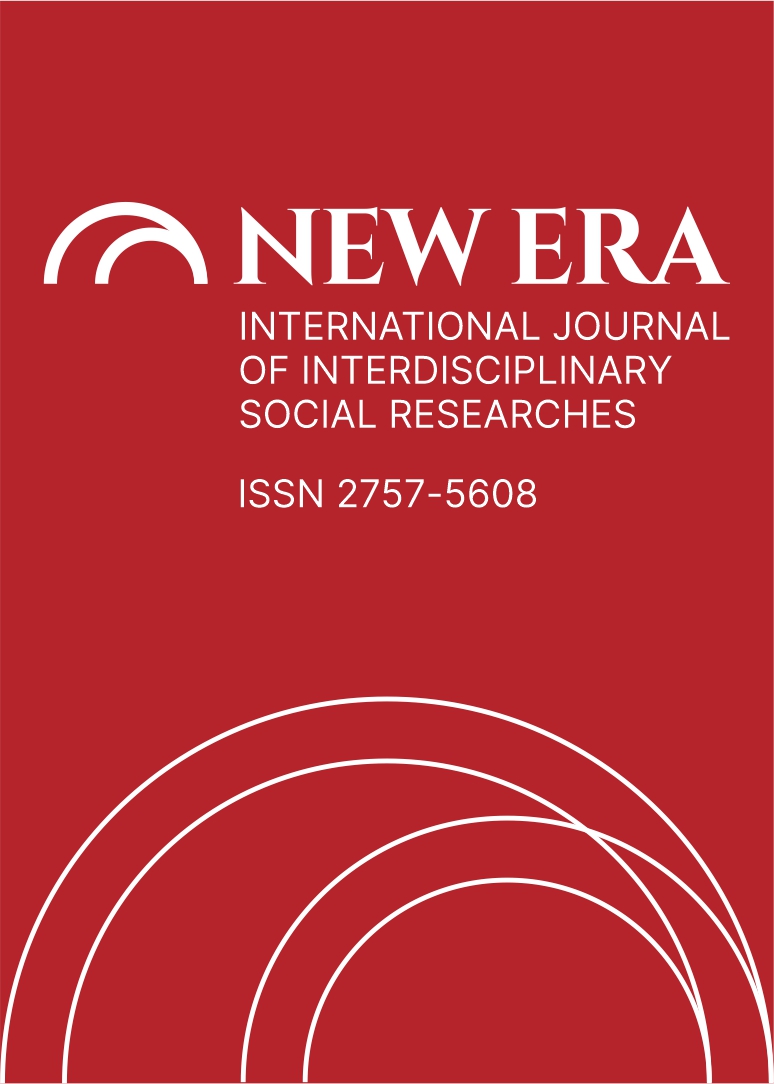EFFECTS OF DIGITALIZATION ON SUPPLY CHAIN AND SUPPLIER SELECTION APPROACHES: AN APPLICATION ON THE ANALYTIC HIERARCHY PROCESS
DOI:
https://doi.org/10.5281/zenodo.8186394Keywords:
Dijitalleşme, Tedarik Zinciri, Tedarik Zinciri Yönetimi, Tedarikçi SeçimiAbstract
In this study, the supplier selection problem was implemented through the supply selection system of a machine manufacturer company using the Analytical Hierarchy Process. In this direction, the method of the research can be expressed as supplier selection with the Analytical Hierarchy Process. Based on this method, the main criteria to be considered in the selection of suppliers were determined as price, quality, guarantee, technical service and delivery, and the sub-criteria of these criteria were also shaped in line with the information received from the supplier's suppliers. In this context, price sub-criteria (discount, maturity, fixed exchange rate, payment method), guarantee sub-criteria (warranty period, return/exchange), technical service sub-criteria (on-site service, service at the supplier, service period), quality sub-criteria (first quality) , second quality, third quality) and delivery sub-criteria (delivery to the door, delivery in the enterprise) was chosen to determine the best supplier.
In the research, it was determined that quality took the first place among the main criteria, followed by the price criterion. Depending on the quality criterion, Supplier-1 takes the first place, while Supplier-2 stands out for the price criterion. In addition to these, a holistic evaluation was made depending on the sub-criteria created under the main criteria, and as a result of the analyzes, it was concluded that the suppliers, which the enterprise prioritizes as T1>T2>T3>T4, can be placed in the order of importance of T1>T3>T2>T4 in line with all the criteria.
.
References
Battelle, J. (2005). The Search: How Google and Its Rivals Rewrote the Rules of Business and Transformed Our Culture. Portfolio.
Boran, F. E., Genç, S., Kurt, M., & Akay, D. (2009). A multi-criteria intuitionistic fuzzy group decision making for supplier selection with TOPSIS method. Expert Systems with Applications, 36(8), 11363-11368.
Brynjolfsson, E., & Hitt, L. M. (2000). Beyond computation: Information technology, organizational transformation and business performance. The Journal of Economic Perspectives, 14(4), 23-48.
Brynjolfsson, E., & McAfee, A. (2014). The Second Machine Age: Work, Progress, and Prosperity in a Time of Brilliant Technologies. W. W. Norton & Company.
Bughin, J., & Hazan, E. (2017). How artificial intelligence can deliver real value to companies. McKinsey Global Institute.
Chen, C. T., & Chao, C. A. (2012). Supplier selection using consistent fuzzy preference relations. Expert Systems With Applications, 39(3), 3233-3240.
Chen, H., Chiang, R. H., & Storey, V. C. (2012). Business Intelligence and Analytics: From Big Data to Big Impact. MIS Quarterly, 36(4), 1165-1188.
Choi, T. Y., & Hartley, J. L. (1996). An exploration of supplier selection practices across the supply chain. Journal of Operations Management, 14(4), 333-343.
Chui, M., Manyika, J., Miremadi, M., Henke, N., Chung, R., Nel, P., & Malhotra, S. (2016). Where machines could replace humans—and where they can’t (yet). McKinsey Quarterly, https://www.mckinsey.com/capabilities/mckinsey-digital/our-insights/ where-machines-could-replace-humans-and-where-they-cant-yet, 14.06.2023
Dabbish, L., & Kraut, R. (2006). Email overload at work: An analysis of factors associated with email strain. Proceedings of the 20th Anniversary Conference on Computer Supported Cooperative Work, 431-440.
Degraeve, Z., Labro, E., & Roodhooft, F. (2000). An evaluation of vendor selection models from a total cost of ownership perspective. European journal of operational research, 125(1), 34-58.
Ghodsypour, S. H., & O’Brien, C. (2001). The total cost of logistics in supplier selection, under conditions of multiple sourcing, multiple criteria and capacity constraint. International journal of production economics, 73(1), 15-27
Ho, W., Xu, X., & Dey, P. K. (2010). Multi-criteria decision making approaches for supplier evaluation and selection: A literature review. European Journal of Operational Research, 202(1), 16-24.
Kaplan, A. M., & Haenlein, M. (2010). Users of the world, unite! The challenges and opportunities of Social Media. Business Horizons, 53(1), 59-68.
Keskin, H. (2015). Tedarik Zinciri Yönetimi- Arka Planı Gelişimi ve Güncel Uygulamaları. 2. Baskı, Nobel Yayınevi.
Laudon, K. C., & Traver, C. G. (2013). E-commerce. Pearson.
Manyika, J., Chui, M., Brown, B., Bughin, J., Dobbs, R., Roxburgh, C., & Byers, A. H. (2011). Big data: The next frontier for innovation, competition, and productivity. McKinsey Global Institute.
Müller, J. M., Kiel, D., & Voigt, K. I. (2018). What Drives the Implementation of Industry 4.0? The Role of Opportunities and Challenges in the Context of Sustainability. Sustainability, 10(1), 247.
OECD (2017). The Next Production Revolution: Implications for Governments and Business. OECD Publishing.
O'Reilly, T. (2005). What Is Web 2.0: Design Patterns and Business Models for the Next Generation of Software. Communications & Strategies, 1(17), 1-21.
Romanosky, S. (2016). Examining the costs and causes of cyber incidents. Journal of Cybersecurity, 2(2), 121-135.
Rüßmann, M., Lorenz, M., Gerbert, P., Waldner, M., Justus, J., Engel, P., & Harnisch, M. (2015). Industry 4.0: The Future of Productivity and Growth in Manufacturing Industries. Boston Consulting Group.
Saaty, T. L. (1980). The Analytic Hierarchy Process. McGraw-Hill.
Schwab, K. (2017). The Fourth Industrial Revolution. Currency.
Sundararajan, A. (2016). The Sharing Economy: The End of Employment and the Rise of Crowd-Based Capitalism. The MIT Press.
Wang, G., Gunasekaran, A., Ngai, E. W., & Papadopoulos, T. (2016). Big data analytics in logistics and supply chain management: Certain investigations for research and applications. International Journal of Production Economics, 176, 98-110.
West, J. (2015). How mobile is changing business. Communications of the ACM, 58(12), 46-52.
Zhu, K. (2004). The complementarity of information technology infrastructure and e-commerce capability: A resource-based assessment of their business value. Journal of Management Information Systems, 21(1), 167-202.
Zhu, K., & Kraemer, K. (2002). E-Commerce Metrics for Net-Enhanced Organizations: Assessing the Value of e-Commerce to Firm Performance in the Manufacturing Sector. Information Systems Research, 13(3), 275-295.
Downloads
Published
How to Cite
Issue
Section
License
Copyright (c) 2023 NEW ERA INTERNATIONAL JOURNAL OF INTERDISCIPLINARY SOCIAL RESEARCHES

This work is licensed under a Creative Commons Attribution-NonCommercial 4.0 International License.


